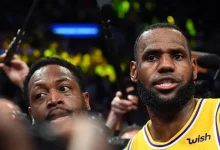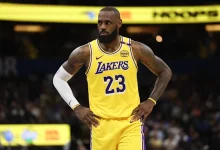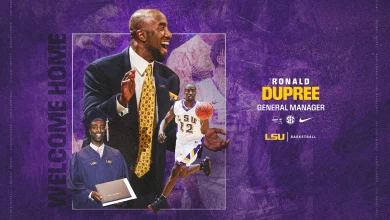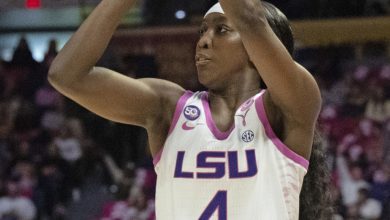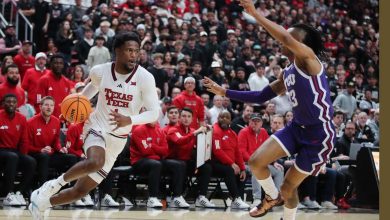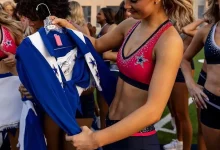A football recruit that Kentucky was pursuing has committed to a different program.
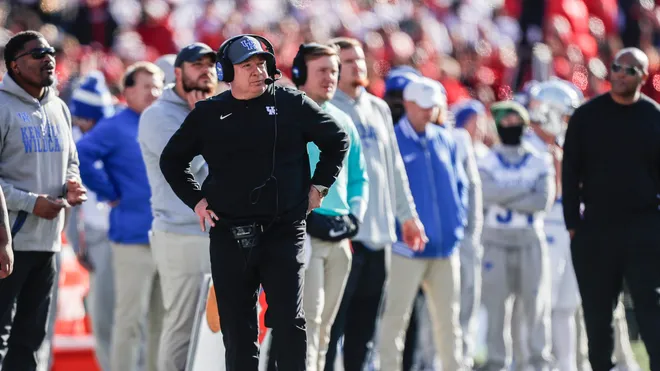
A football recruit that Kentucky was pursuing has committed to a different program.
The Kentucky Wildcats football program has recently experienced a series of recruiting setbacks, with several high-profile targets choosing to commit to other programs. These developments highlight the challenges Kentucky faces in maintaining momentum in the competitive landscape of college football recruiting.
Marquise Davis Flips to Missouri
One of the most significant losses for Kentucky came when four-star running back Marquise Davis flipped his commitment to Missouri. Davis, a 6’1″, 205-pound prospect from Cleveland, Ohio, had been committed to Kentucky since May and was ranked as the No. 7 running back in the 2025 class. His decision to switch allegiance marks a major setback for Kentucky, which had hoped to utilize his talents immediately given their uncertain backfield situation. Additionally, Kentucky lost three-star recruit Tucker Kattus to Clemson, adding to their recruitment woes. This series of decommitments poses a significant challenge for head coach Mark Stoops, as the team struggles to rebound and prepare for a successful 2025 season.
Tucker Kattus Chooses Clemson
In another blow to Kentucky’s recruiting efforts, three-star offensive tackle Tucker Kattus flipped his commitment from the Wildcats to the Clemson Tigers. Kattus, a 6’5″, 285-pound prospect from Cincinnati, Ohio, had been committed to Kentucky since June 7th and had two older brothers on the current roster. His decision to switch allegiance reflects poorly on Kentucky’s football program and marks a challenging start to December for coach Mark Stoops and his staff. This move signals potential concerns within the team as they brace for a busy offseason.
Ahmad Hardy Commits to Missouri
Kentucky’s pursuit of running back Ahmad Hardy, formerly of Louisiana-Monroe, also ended in disappointment as he committed to Missouri. Hardy rushed for more than 1,300 yards last season and had 13 touchdowns, making him one of the top running backs available in the transfer portal. Kentucky reached out to set up a visit, but Hardy ultimately chose Missouri after visiting their campus. This decision leaves Kentucky with a need to find a veteran running back to bolster their depth chart.
Kenton “KJ” Kirkland Commits to Florida State
In the defensive backfield, three-star prospect Kenton “KJ” Kirkland committed to Florida State over Kentucky. Kirkland, a Florida native, had visited Florida State’s campus five times and was impressed by the energy of head coach Mike Norvell. His decision to choose Florida State over Kentucky adds to the Wildcats’ challenges in securing top defensive talent.
Kentucky’s Recruiting Challenges
These developments underscore the challenges Kentucky faces in maintaining momentum in the competitive landscape of college football recruiting. The loss of key recruits to rival programs raises questions about the Wildcats’ ability to secure top talent and build a competitive roster. As the program looks to rebound, it will need to address these challenges and strengthen its recruiting efforts to remain competitive in the SEC.
Navigating the Recruiting Terrain: Challenges for Kentucky Football
College football recruiting is a fierce battleground. Programs across the Power Five compete not only for the top-ranked players but also for regional prospects who may offer long-term development potential. For Kentucky, a program on the rise over the past decade under Coach Mark Stoops, maintaining relevance and momentum requires a precise balance of recruiting success, player development, and on-field results.
While recent seasons have seen Kentucky achieve bowl eligibility consistently and even flirt with SEC East contention, the Wildcats are still not immune to the systemic challenges faced by mid-tier SEC programs. When top-tier programs like Georgia, Alabama, and LSU come knocking on a recruit’s door, the pitch Kentucky offers—while appealing—is often harder to sell.
Running Back
Losing both Marquise Davis and Ahmad Hardy leaves a glaring void in Kentucky’s offensive backfield. Davis was considered one of the more physically gifted backs in the 2025 class, and his decommitment—especially to a rising SEC rival like Missouri—hurts both on the field and in perception.
Ahmad Hardy, a transfer portal target with immediate impact potential, opting for Missouri only compounds that loss. Kentucky now faces two major concerns:
-
Depth and Experience: Without these additions, the Wildcats are thin on proven running backs behind their starters.
-
Offensive Versatility: The offensive scheme under Liam Coen has thrived when the running game is strong. Recruiting misses at this position could limit play-action opportunities and reduce balance.
Offensive Line
The flip of Tucker Kattus to Clemson is perhaps the most painful, not only due to his talent and size but because of his family’s connection to the program. It’s one thing to lose a recruit—another when they have existing roots within your team. Kattus’ decommitment could signal internal issues or dissatisfaction that may concern other prospects or current players.
Offensive line depth and development have been a cornerstone of Stoops’ success. Losing a high-upside lineman like Kattus to a playoff-caliber team like Clemson suggests that Kentucky’s pitch may need updating, particularly for linemen seeking exposure and development for the NFL.
Defensive Secondary
The Wildcats have often relied on strong defensive back play, with players like Kelvin Joseph, Brandin Echols, and Carrington Valentine reaching the NFL. But losing KJ Kirkland to Florida State reflects a recruiting disadvantage when it comes to battling legacy-rich programs in their own backyard. Florida schools naturally hold the upper hand over Kentucky for in-state prospects, but frequent losses in these battles diminish Kentucky’s national appeal.
The Stoops Effect: Is It Wearing Off?
Mark Stoops is Kentucky’s all-time winningest coach, a record he earned through consistency, defense-first coaching, and a reputation for player development. However, in today’s NIL-driven recruiting landscape, reputation is only part of the equation.
Recruits are increasingly looking for:
-
Immediate exposure and national TV games
-
NFL pipelines and draft history
-
NIL opportunities
-
Stability at key coaching positions
While Stoops has provided a stable foundation and developed several NFL players, Kentucky may be falling behind in areas like NIL funding and high-visibility exposure. This may explain why programs like Missouri, Clemson, and Florida State—who can offer stronger national brand equity or NIL packages—are winning more head-to-head battles.
What Kentucky Must Do to Recover
1. Aggressive Transfer Portal Strategy
The transfer portal has become the great equalizer for programs that miss out on top high school talent. Kentucky must pivot aggressively to identify experienced players ready to contribute right away, particularly at running back and on the offensive line.
Recent success stories like QB Will Levis (Penn State transfer) show that Kentucky can attract talented players who need a second chance or a better platform.
2. Reinforce NIL Infrastructure
If Kentucky wants to remain competitive in recruiting, it must bolster its NIL collectives and partnerships. The Big Blue Nation has a passionate fanbase, and leveraging that into structured NIL opportunities can help attract talent looking for both development and compensation.
3. Strengthen Regional Relationships
The Wildcats have had success recruiting Ohio, Michigan, and parts of the South. Reinforcing these relationships through consistent visits, alumni outreach, and recruiting events can help build pipelines and relationships that weather the storm of late flips or decommitments.
4. Win Big Games
Nothing improves recruiting like winning—and not just beating unranked opponents. If Kentucky can pull off a signature upset or contend for the SEC East in the next season or two, it can elevate the program’s profile significantly. A New Year’s Six bowl or playoff appearance—even as a long shot—would transform the recruiting narrative overnight.
A Crossroads for Kentucky Football
The recent wave of recruiting losses is not necessarily a crisis—but it is a warning. Programs like Kentucky must constantly punch above their weight to remain relevant in a hypercompetitive SEC. Losing recruits to peer or superior programs is part of the landscape, but the volume and significance of the recent departures mean Kentucky must act swiftly and strategically.
Coach Mark Stoops has built something admirable in Lexington. Now, the challenge is to sustain and grow that foundation in a changing college football world dominated by NIL, the portal, and national brands.
If Kentucky adapts, the program can continue to surprise and build toward a sustained contender status. If not, it risks slipping back into mediocrity, overshadowed by SEC powerhouses and up-and-coming challengers alike.

